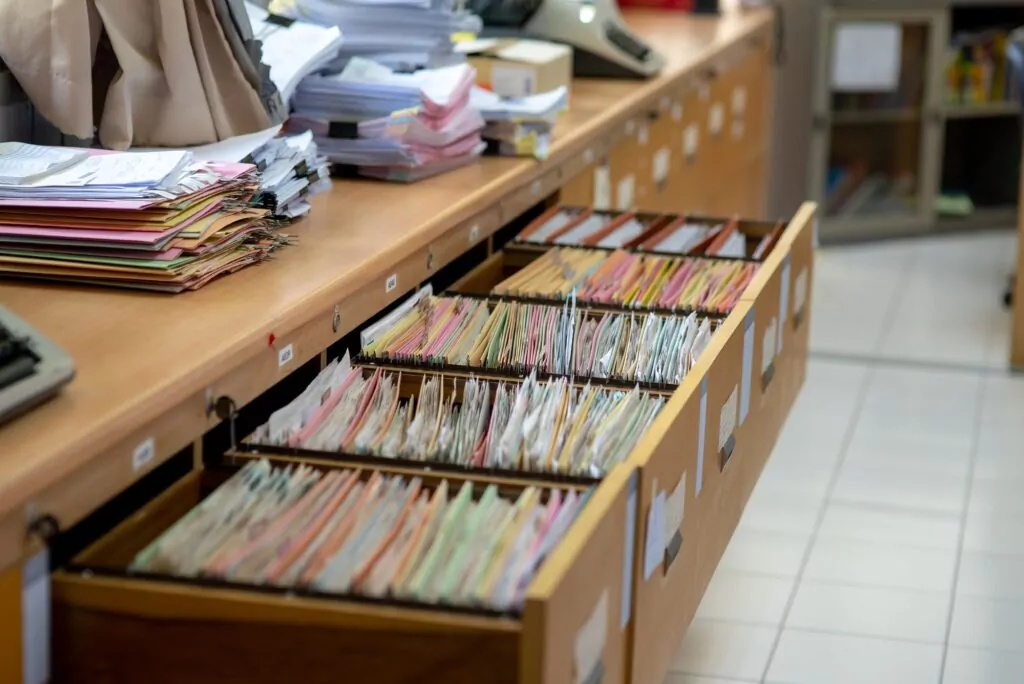The average rural hospital has an average 3,000 boxes of paper records even though they implemented EMR software a decade ago. Ninety-five percent of hard copy records will never be accessed, so scanning everything is an expensive, inefficient solution. Labor associated with managing medical records requests and retention costs the average rural hospital $30,000 per year. The biggest risk to these hospitals managing paper records is the unlimited opportunities for a Protected Health Information (PHI) breach associated with storing records in unsecured spaces all over campus and making access available to many people. Secure Records Solutions has developed three cost-effective strategies for eliminating paper to reduce risk and expense in rural health environments.
1. Manage Retention Many rural hospitals keep records kept longer than they should be because of inefficient storage. For example, if you have alphabetized your records, you are likely storing adults in the same boxes as children, which have a much longer retention requirement. This creates several hidden costs, the biggest of which is extending storage is extended, creating an unnecessary liability.
2. Implementing EMR Many of our clients are on their second or third EMR software because of implementation failures with past products. The expense of a failed EMR conversion is hundreds of thousands of dollars, and it generally happens because some portion of your staff struggles to give up their old ways and adopt the software. Files and work get duplicated, the software doesn’t do what it was supposed to, and frustrations abound. Eventually a mutiny occurs, and your crew throws the EMR overboard. In order to achieve a fully implemented EMR software, you need to remove the crutch of paper records. If your staff can’t rely on the file, they are forced to use the software as intended. However, it is a mistake to focus on back file scanning, however. After all, doctors, nurses, and staff are already overworked and overburdened with administrative work. Instead, develop a process for scanning all incoming documents and outsource the management of hardcopy records and “on-demand” scanning. This will alleviate the unnecessary and costly job of scanning records with a 5% chance of ever being recalled.
3. Scanning Scanning is a black hole of time that must be managed or it will cost you tens of thousands of dollars hidden in your payroll. In our digital world, most everyone prefers working without the clutter of paper, but when and how things are scanned makes all the difference in the cost of your digital existence:
- First, where? You must have a place for scans to go. If you don’t have a document management software, scanning will be a waste of money.
- Second, what and why are you scanning? Are you scanning to eliminate paper, or to serve a specific purpose? 95% of your records will never be needed – why pay $200/box to covert a physical problem into a digital one?
- Third, who and when is the scanning happening? We often follow documents within an organization that are scanned multiple times throughout their life. You need a workflow plan by department for how documents are treated.
- Finally, how? Are you scanning at each work station, in batches, or even through referring offices?
Indexing is a vital step in understanding what data you have before making expensive strategic decisions about digitizing and destroying records. Through inventory management software, SRS is able to query the system and locate a file within minutes, scanning it back to a client within half an hour, many times less. We had a health-related client going through a large annual audit requesting 90+ boxes and we were able to retrieve everything they needed for their audit within two hours.
As we well know, rural hospitals face enough challenges as it is. If you are a rural hospital struggling with EMR adoption or an abundance of paper and a frustrated staff, know that SRS can help. These types of projects are also good candidates for Georgia HEART funds grants. Contact us today to find out more.



